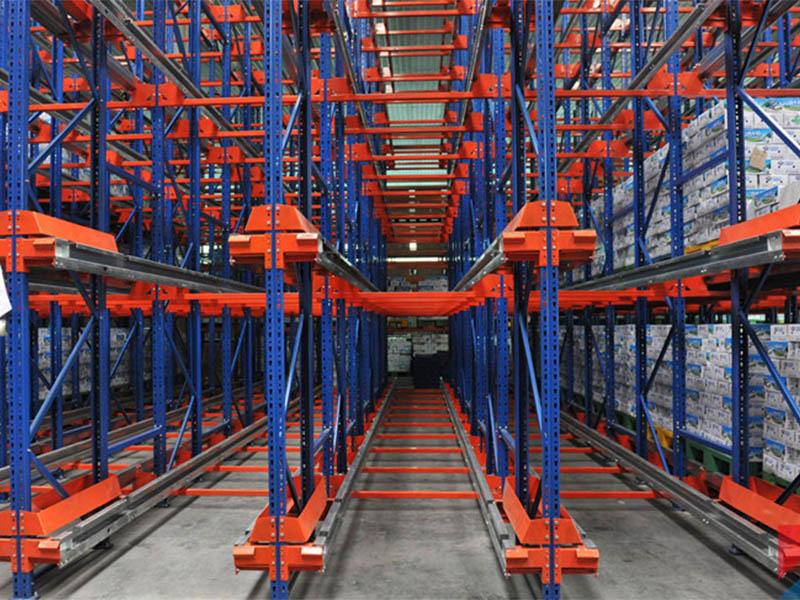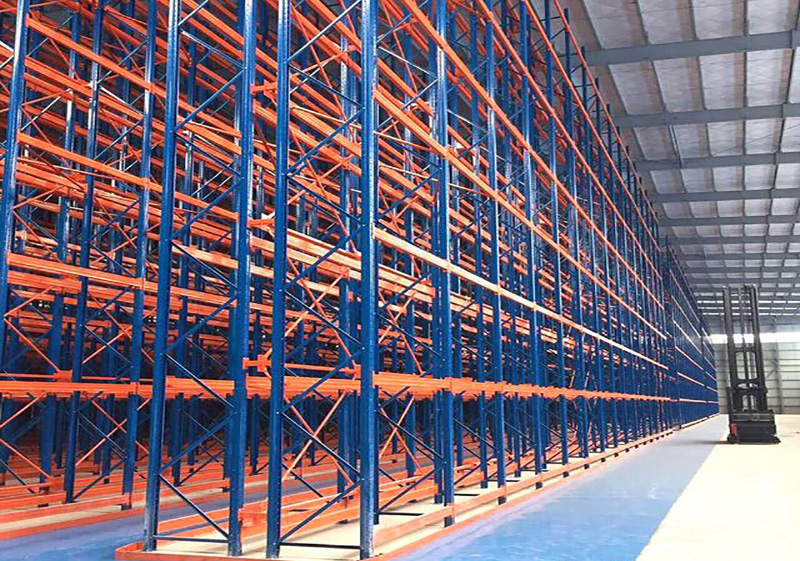In the demanding environments of warehouses, factories, workshops, and distribution centers, standard storage solutions simply won't cut it. When you need to organize, secure, and access heavy loads reliably day in and day out, heavy duty industrial metal shelving stands as the undisputed champion. This robust storage infrastructure is engineered to withstand the rigors of industrial use, maximizing space efficiency and operational safety. This comprehensive guide delves deep into the world of heavy duty industrial metal shelving, exploring its defining characteristics, benefits, applications, selection criteria, and maintenance essentials.

Unlike lighter-duty shelving found in retail or home use, heavy duty industrial metal shelving is characterized by several key attributes:
Robust Construction: Primarily fabricated from high-grade steel (often 12, 14, or 16 gauge), significantly thicker and stronger than shelving designed for lighter loads.
Exceptional Load Capacity: Engineered to support substantial weights per shelf, ranging from hundreds to several thousand pounds (or kilograms). Capacities are clearly rated and tested.
Durable Finishes: Features protective coatings like powder coating, epoxy paint, or galvanization to resist corrosion, scratches, chipping, and harsh environmental factors (chemicals, moisture, abrasion).
Reinforced Design: Incorporates structural reinforcements such as heavier-gauge uprights, deeper beams, additional cross-bracing, and thicker decking (wire mesh, particle board, or steel panels).
Modularity & Scalability: Typically features a boltless or bolted design allowing for easy assembly, reconfiguration, and expansion as storage needs evolve.
Safety Focus: Designed with stability in mind, often requiring anchoring to the floor for maximum safety, especially under heavy loads or in seismic zones. Smooth edges and secure connections minimize hazards.
The backbone of heavy duty industrial metal shelving is its material science and precision manufacturing.
Steel Grades: High-tensile strength cold-rolled steel is the standard. The gauge (thickness) is critical – lower gauge numbers indicate thicker, stronger steel (e.g., 12 gauge is thicker than 16 gauge). Uprights and beams are formed from heavy-gauge steel using roll-forming machines for consistent strength and shape.
Protective Finishes:
Powder Coating: Electro-statically applied dry powder, then cured under heat. Offers excellent durability, corrosion resistance, and a wide range of colors. Highly resistant to chipping and scratching.
Epoxy Paint: Provides a tough, chemical-resistant barrier, often used in environments exposed to oils, solvents, or cleaning agents.
Galvanization: A zinc coating applied via hot-dip or electroplating process, offering superior corrosion resistance, especially in damp or outdoor-adjacent environments. Often silver or grey.
Decking Options: The shelf surface must match the load and environment:
Heavy-Duty Wire Mesh: Allows for air circulation, light penetration, and drainage. Ideal for dusty environments, washdown areas, or storing items that need ventilation. Available in various gauges and mesh densities.
Particle Board (Melamine or Laminate Covered): Provides a solid, smooth surface for small items. The laminate coating enhances durability, moisture resistance, and cleanability. Requires adequate support beams underneath.
Steel Panels: The most robust option, offering a solid, impact-resistant surface for extremely heavy or uneven loads. Often used in pallet racking applications or for bulky machinery parts.
Joining Mechanisms: Boltless designs use engineered tabs and hooks for fast, tool-free assembly/disassembly. Bolted designs use nuts and bolts for maximum rigidity in the most extreme applications. Both ensure secure connections.
Heavy duty industrial metal shelving isn't just thick metal; it's intelligently engineered.
Upright Frames: These are the vertical pillars. Their depth and gauge determine overall stability and load capacity. Heavy-duty frames are deeper (e.g., 42", 48", 54") and made from thicker steel than light-duty versions. They feature numerous evenly spaced holes for adjustable beam placement.
Beams (Braces): These horizontal members support the shelves and transfer the load to the uprights. Heavy-duty beams are deeper and often have a "step" or "lip" to securely hold the decking. Their length and gauge must match the load requirements and shelf depth.
Bracing: Diagonal or horizontal braces connect upright frames, significantly increasing structural rigidity and preventing sway, especially for taller units or those under heavy, uneven loads. Cross-bracing is critical for stability.
Load Capacity: This is paramount. True heavy duty industrial metal shelving will have clearly stated uniformly distributed load (UDL) capacities per shelf level and a total unit capacity. It's crucial to understand the difference between UDL (weight spread evenly) and concentrated loads (weight focused on a small area). Never exceed rated capacities.
Adjustability: Shelf heights are easily reconfigured by moving beams to different hole positions on the uprights, accommodating items of various sizes. This flexibility is a major advantage over fixed shelving.
Anchoring: Floor anchoring is strongly recommended, and often required by safety regulations, for all heavy duty industrial metal shelving, particularly units over a certain height or carrying heavy loads. It prevents tipping and ensures seismic stability.

The strength and adaptability of heavy duty industrial metal shelving make it indispensable in countless settings:
Warehousing & Distribution Centers: Storing bulk parts, tools, equipment, supplies, and pre-shipping goods. Ideal for organizing SKUs efficiently in picking and packing areas.